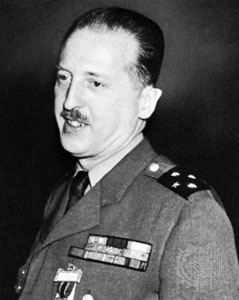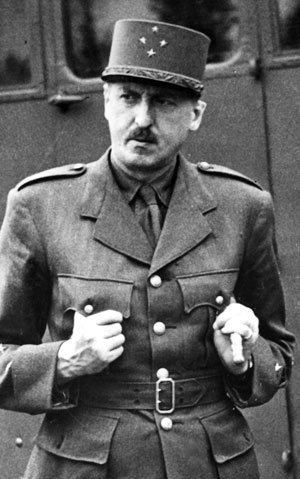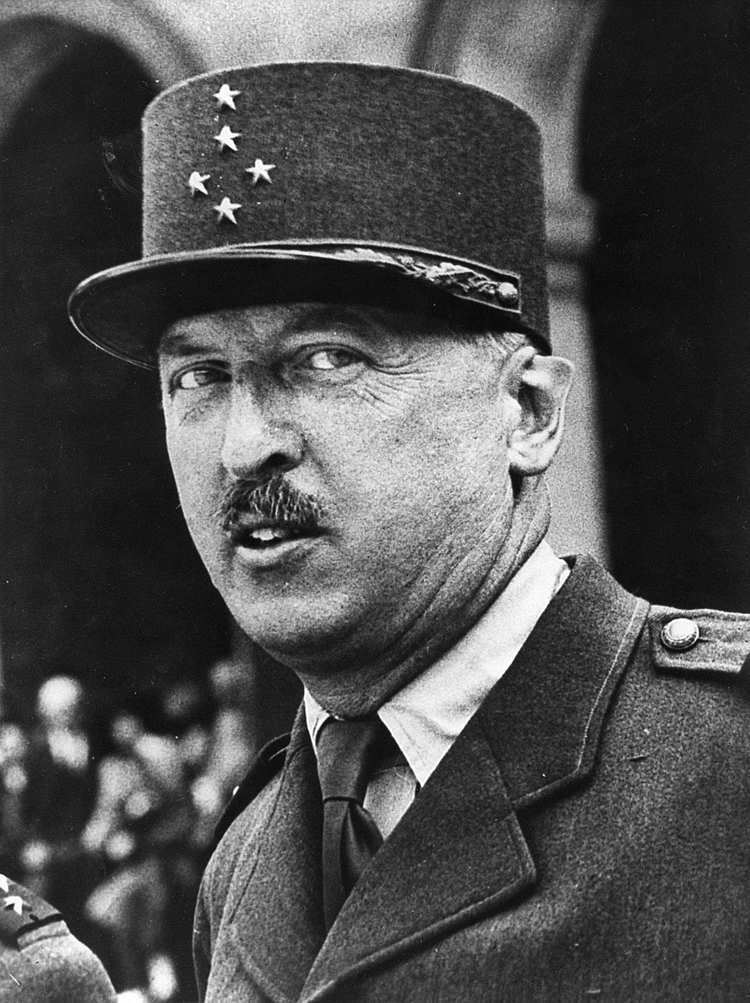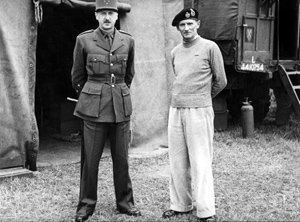Name Marie-Pierre Kœnig | Years of service 1917–1951 | |
 | ||
Rank General (1941), Posthumously raised to Marshal of France by Commander-In-Chief (President) Francois Mitterrand (1984) Battles/wars World War IWorld War II Awards Marshal of FranceGrand Cross of the Legion d\'honneurCompanion of the LiberationCroix de Guerre 1914–1918Croix de Guerre 1939–1945Croix de guerre des theatres d\'operations exterieuresMedaille de la ResistanceMedaille colonialeCroix du combattantDistinguished Service Order (UK)Companion of the Order of the Bath (UK)Grand Cross of the Order of George I (Greece) Similar People Erwin Rommel, Jean de Lattre de Tassigny, Charles de Gaulle, Claude Auchinleck, Francois Darlan | ||
SYND 8 6 68 SUPPORTERS OF FRENCH PRESIDENT CHARLES DE GAULLE PARADE IN PARIS
Marie-Pierre Kœnig ([maʁi pjɛʁ køniɡ]; 10 October 1898 – 2 September 1970) was a French army officer and politician. He commanded a Free French Brigade at the Battle of Bir Hakeim in North Africa in 1942.
Contents
- SYND 8 6 68 SUPPORTERS OF FRENCH PRESIDENT CHARLES DE GAULLE PARADE IN PARIS
- Early life
- World War I
- Between 1918 and 1940
- World War II
- Cold War
- Political career
- Death
- Honours and awards
- References
Early life

Marie-Pierre Kœnig was born on 10 October 1898, in Caen, Calvados, France. His parents were from the Alsace region.
World War I
Kœnig fought in the French Army during World War I and served with distinction.
Between 1918 and 1940
After the war, he served with French forces in Morocco and Cameroon.
World War II

When World War II broke out, Kœnig returned to France. In 1940, he was assigned as a captain with the French troops in Norway, for which he was later awarded the Krigskorset med Sverd or Norwegian War Cross with Sword, in 1942. After the fall of France, he escaped to England from Brittany.

In London, Kœnig joined General Charles de Gaulle and was promoted to colonel. He became chief of staff in the first divisions of the Free French Forces. In 1941, he served in the campaigns in Syria and Lebanon. He was later promoted to general and took command of the First French Brigade in Egypt. His unit of 3700 men held ground against five Axis divisions for 16 days at the Battle of Bir Hakeim until they were ordered to evacuate on 11 June 1942. General de Gaulle said to Kœnig: "Hear and tell your troops: the whole of France is watching you, you are our pride."
Later, Kœnig served as the Free French delegate to the Allied headquarters under General Dwight D. Eisenhower. In 1944, he was given command of the Free French who participated in the Invasion of Normandy. Kœnig also served as a military advisor to de Gaulle. In June 1944, he was given command of the French Forces of the Interior to unify various French Resistance groups under de Gaulle's control. Under his command, the FFI stopped range battle in the Maquis, preferring sabotage waged in support of the invasion army. Important in D-Day, the role of the FFI became decisive in the battle for Normandy and in the landing in Provence of the US Seventh Army and French Army B. On 21 August 1944, de Gaulle appointed Kœnig military governor of Paris to restore law and order. In 1945, he was sent to arrest Marshal Pétain, who had taken refuge in Germany, but who gave himself up at the frontier with Switzerland.
Cold War
After the war, Kœnig was commander of the French army in the French occupation zone of Germany from 1945 to 1949. In 1949, he became inspector general in North Africa and in 1950 vice-president of the Supreme War Council.
Political career
In 1951, after his retirement, Kœnig was elected as Gaullist representative to the French National Assembly and briefly served as a minister of defence under Pierre Mendès-France (1954) and Edgar Faure (1955).
He gave his support to the new State of Israel as president of the Franco-Israeli Committee (Comité franco-israélien). Koenig had witnessed the heroism of a battalion of mine layers from the Jewish Brigade during the Battle of Bir Hakeim and afterwards allowed them to fly their own Star-of-David flag, against British regulations.
Death
Marie-Pierre Kœnig died on 2 September 1970, in Neuilly-sur-Seine, and was buried at Montmartre Cemetery in Paris.
